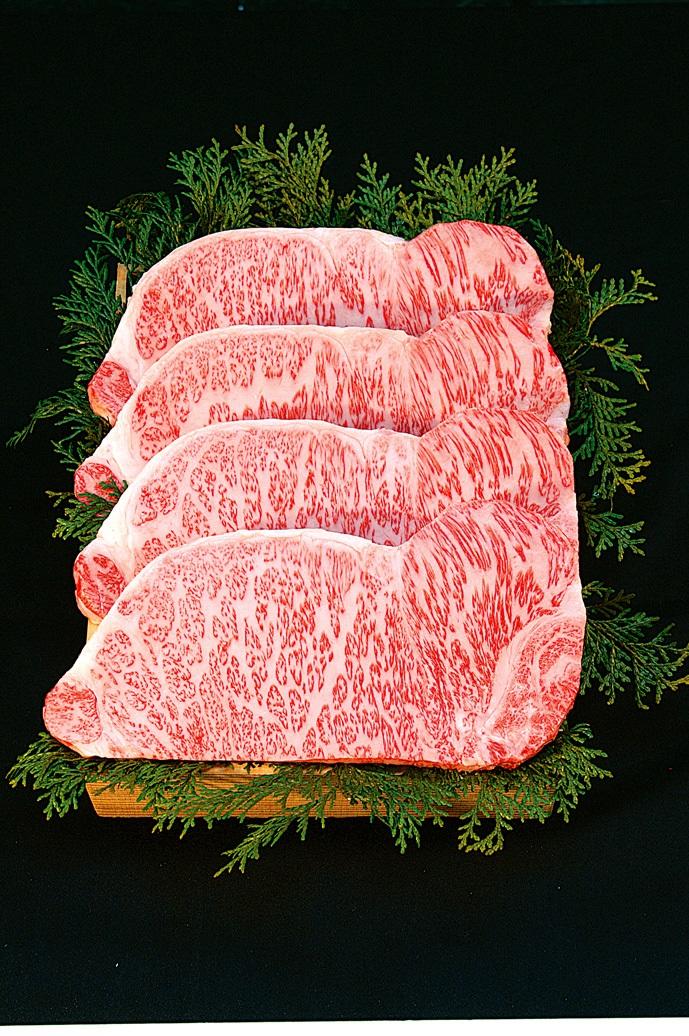Miyazaki Gyu
| Registration Number | 55 |
|---|---|
| Name of the GI | Miyazaki Gyu,Miyazaki Wagyu,Miyazaki Wagyū,Miyazaki Beef |
| Class | Meat |
| Date of Protection | 2017/12/15 |
| Producing Area | Miyazaki Prefecture |
| Applicant - Name and Address | Superior Miyazaki Beef Producers Association 1-1-1 Kirishima, Miyazaki City, Miyazaki Prefecture, |
"Miyazaki Beef" is the name granted to beef from Japanese Black cattle produced in Miyazaki Prefecture with a Japanese Meat Quality Grade of four and above (1).
"Miyazaki Beef" is characterized by its superb flesh and fine marbling. When taken in the mouth, the meat has a faint sweetness and mellow aroma.
At the Japan's National Competitive Exhibition of Wagyu (2) held once every five years, "Miyazaki Beef" has won the highest prize consecutively at the last three expos.
Calves raised for "Miyazaki Beef" must come from a bloodline of Japanese Black stud bulls developed in Miyazaki Prefecture through a prefecture-wide effort. Moreover, their birth place must be exclusively Miyazaki Prefecture.
In addition, only cattle that have spent the longest part of their feeding period in Miyazaki Prefecture and that have a Japanese Meat Quality Grade of four and above can be designated "Miyazaki Beef."
Miyazaki Prefecture faces the Pacific Ocean and has a coastline extending 400 km from north to south. The Kuroshio (3), a warm ocean current flowing in the Pacific Ocean, and the Kyushu Mountains (4), which block the cool northerly winds, ensure that Miyazaki Prefecture has a year-round temperate climate. Taking advantage of these climatic conditions, Miyazaki Prefecture is one of the areas boasting the most number of beef cattle in the country.
The quality of beef calves raised in Miyazaki Prefecture is highly esteemed throughout Japan. About one-quarter of the calves raised in the prefecture are shipped to other prefectures throughout Japan, where they are used for fattening or breeding to produce brand beef.
As one of Japan's largest beef-production areas, according to its own policy, Miyazaki Prefecture has improved the wagyu breed to make it "easy to fatten, easy to raise and have good quality meat." In 1973, the Miyazaki Wagyu Improvement Association was established, creating Japan's first unified management system for the development and management of stud bulls in the prefecture. Producers worked with industry-related groups and local government officials in a prefecture-wide effort to establish a system for improving beef cattle. This system came to be called "Miyazaki Style" and is still practiced today.
Moreover, the Economic Federation of JA Miyazaki and technical specialists working for local JA branches joined forces to consider the fodder given to cattle in different locales, to organize workshops for improving feed management, and to offer farmers technical guidance on cattle fattening.
"Miyazaki Beef", which was developed over several decades through the efforts of beef producers and related parties in Miyazaki, has thus come to be loved by people both within and outside of Miyazaki Prefecture. It has now reached the stage where it has won three successive championships at the Japan's National Competitive Exhibition of Wagyu.
In 1986, the prefectural government, the Economic Federation of JA Miyazaki, and other related party established "YoriyokiMiyazakiBeef Council" and realized the long-cherished desire to create the brand, "Miyazaki Beef."
- Japanese Meat Quality Grade: An index of beef quality that ranks meat from grades one to five, with five the highest. Four elements go into an overall meat quality grade: "beef marbling", "flesh color and luster", "flesh firmness and texture", and "fat color, luster and quality."
- Japan's National Competitive Exhibition of Wagyu: A competitive exhibition for Wagyu (Japanese Black) held once every five years.
- Kuroshio Current: An ocean current that flows from the East China Sea past the Tokara Islands (a small archipelago between Kyushu and the Amami Islands) into the Pacific Ocean. It flows along the southern coast of the Japanese archipelago, then east off the Boso Peninsula. It is also known as the Japan Current. It is one of the largest ocean currents in the world, along with the Antarctic Circumpolar Current and the Gulf Stream in the Atlantic Ocean.
- Kyushu Mountains: A mountainous region that extends diagonally across the island of Kyushu from the northeast to the southwest- from southern Oita Prefecture, through the Kuma region of Kumamoto Prefecture and northern Miyazaki Prefecture to the Satsuma region of Kagoshima Prefecture.


